We have much more to do and your continued support is needed now more than ever.
Monarch Butterfly Identification Guide
This blog and fun monarch quiz serve as an unofficial identification guide for those looking to assist with Monarch Watch or otherwise want to hone their ID skills.
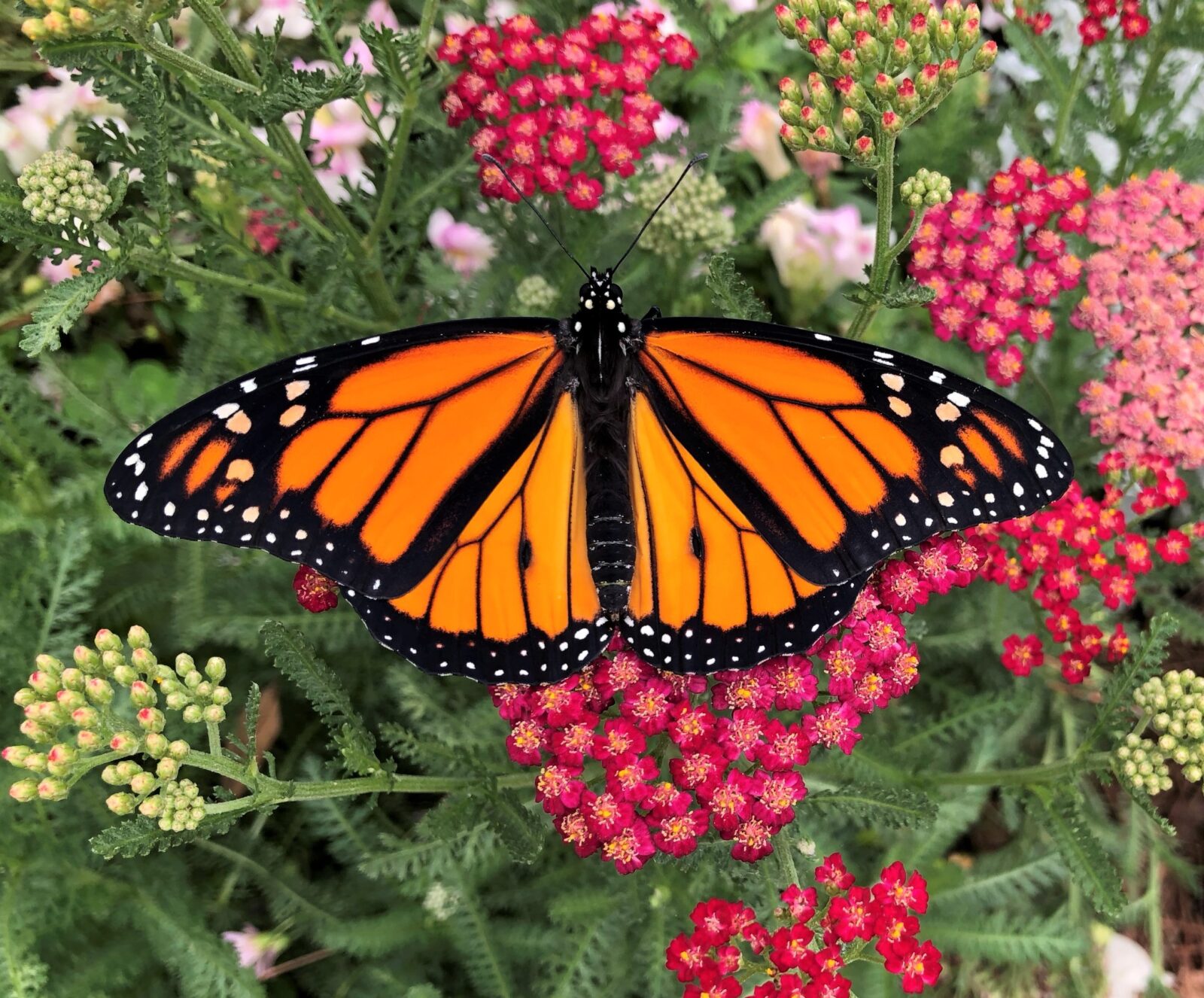
Have you ever spotted a beautiful orange butterfly fluttering by and wondered if it’s the iconic monarch butterfly? You’re not alone! The monarch butterfly is one of the most recognizable and beloved insects in North America, but it has a few look-alikes that can easily fool even the most keen-eyed among us.
The ability to correctly identify the monarch butterfly is more than just a fun skill for nature lovers—it’s crucial for conservation efforts. Monarchs are native pollinators and play a vital role in our North American ecosystem, but their populations are in staggering decline across the continent. Citizen science programs like Monarch Watch can learn a lot about monarch population status by using observational data collected by people like you. That’s why we’ve put together this comprehensive guide and identification quiz to help you distinguish the monarch butterfly from its similar-looking cousins. And we’re not just talking about the adult butterflies; we’ll also delve into differences among caterpillars and the plants they call home. So, whether you’re a budding naturalist or a seasoned butterfly enthusiast, read on to become a true Monarch Maven!
The Monarch Butterfly
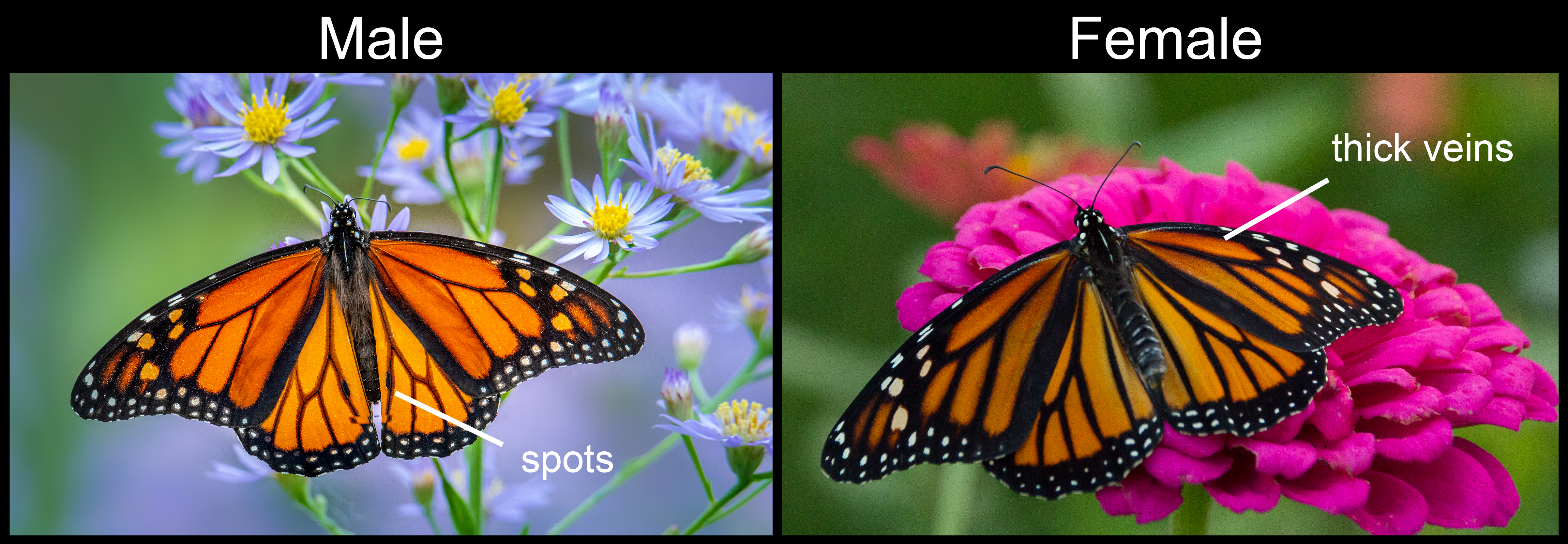
There are six subspecies of monarch butterfly worldwide, but only one can be found across North America: Danus plexippus plexippus. A second, non-migratory subspecies, Danus plexippus megalippe, can also be found from Florida and Georgia southward. Visually, these subspecies are identical.
These regal butterflies are a sight to behold with their vibrant orange wings, laced with black veins and bordered by a black edge dotted with white spots. This striking coloration isn’t just for show; it serves as a warning to predators that the monarch is unpalatable, thanks to the toxins it accumulates from its host plant, milkweed.
Monarch butterflies have distinctly black bodies with white speckling, and are relatively large butterflies. Their wingspans can reach almost 5 inches across.
Adult monarchs are sexually dimorphic, meaning that males look different than females. Males are distinguished by two black spots, one on each hind wing, that emit pheromones meant to lure in females. In general, females tend to be of a darker orange and have thicker veining.
Monarch Caterpillars

The monarch caterpillar is equally captivating, adorned with bright bands of yellow, black, and white. These colors, like those of the adult, serve as a warning to predators. Unlike some other caterpillars, monarchs have two pairs of antennae-like tentacles, one pair at each end of the body. Monarch caterpillars grow through five “instars,” or developmental stages, which can look quite different from each other.

First Instar: Less than a quarter of an inch long and mostly translucent with faint, yellowish-white bands. At this stage, the caterpillar eats its own eggshell before moving on to milkweed leaves.

Second Instar: Slightly larger than the first instar at about one third of an inch. The yellow bands start to become more visible, and the caterpillar begins to take on a more vibrant coloration. At this point the caterpillar will feed voraciously on milkweed leaves, starting at the edges.

Third Instar: Approximately a half an inch long and the bands of black, yellow, and white become more pronounced.

Fourth Instar: Ranges from half an inch to a little under 1.5 inches long. Colors deepen, and the caterpillar looks like a miniature version of its final stage, with a much less bulbous-looking head than previous instars.

Fifth Instar: Can grow up to 1.75 inches long. The caterpillar is plump and at its most vibrant.
Instar identification photos courtesy of Monarch Watch.
Monarch Native Host Plants
Native milkweed is more than just a plant; it’s the monarch’s lifeline. This plant is one source of the nectar that adult monarchs feed on, but more importantly, its leaves serve as the sole food source for monarch caterpillars. You will almost only ever find monarch caterpillars feeding on a milkweed host plant. Consider planting native milkweed to attract monarchs to your garden. Not only will you be providing a critical food source for these beautiful creatures, but you’ll also be contributing to their conservation!
Below are some native species of milkweed across North America on which you might find monarch caterpillars:
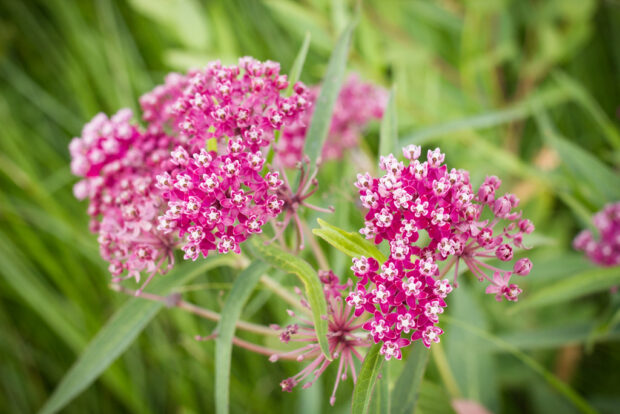
Swamp Milkweed (Asclepias incarnata)
Leaves: Narrow and lance-shaped
Flowers: Pink to mauve clusters
Region: Common in wetlands across most of the U.S.
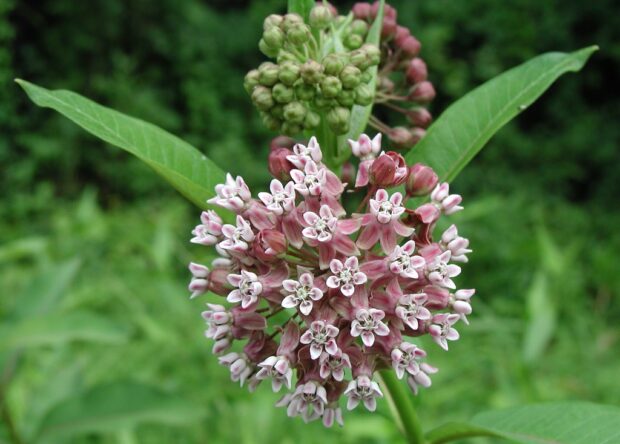
Common Milkweed (Asclepias syriaca)
Leaves: Broad, oval-shaped, and covered in soft hairs
Flowers: Pink to purple clusters
Region: Found on eastern two-thirds of the U.S.; absent from most of Florida
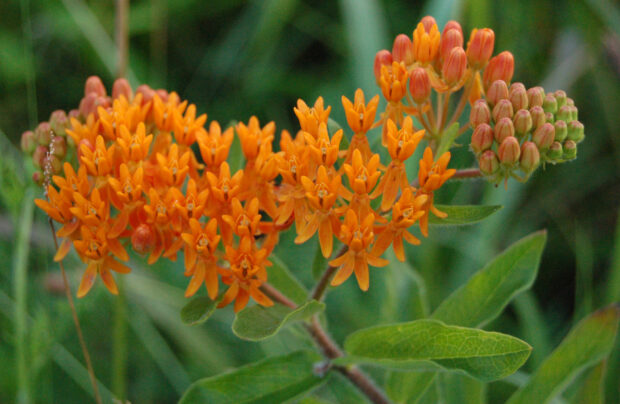
Butterfly Weed (Asclepias tuberosa)
Leaves: Narrow and lance-shaped, but more vibrant
Flowers: Bright orange clusters
Region: Found in well-drained soils, often in prairies or open woodlands, across most of the U.S.

Showy Milkweed (Asclepias speciosa)
Leaves: Broad and covered in soft, velvety hairs
Flowers: Pink to purple, similar to Common Milkweed but more vibrant
Region: Primarily in the Western U.S.
The Problem with Tropical Milkweed
Keep monarchs away from tropical milkweed!
Tropical milkweed is a non-native species that may seem like it supports monarch populations in the U.S., but this species can actually cause more harm than good. Tropical milkweed is a perennial plant that halts both the spring and fall migrations of the monarch butterfly and can infest monarchs with a very infectious and fatal protozoan. Check out our Supporting Picky Eaters panel discussion with experts to learn more.

Tropical Milkweed (Asclepias curassavica)
Leaves: Narrow and lance-shaped, similar to Butterfly Weed
Flowers: Bright red or orange with a yellow center
Region: Not native to North America but often used in ornamental gardens
Note: While attractive, tropical milkweed is not recommended for monarch conservation efforts as it can disrupt their natural migration and lifecycle and potentially spread fatal disease.
For more information on how to get started, check out the NWF’s Milkweed for Monarchs page.
Similar Species
Viceroy Butterfly
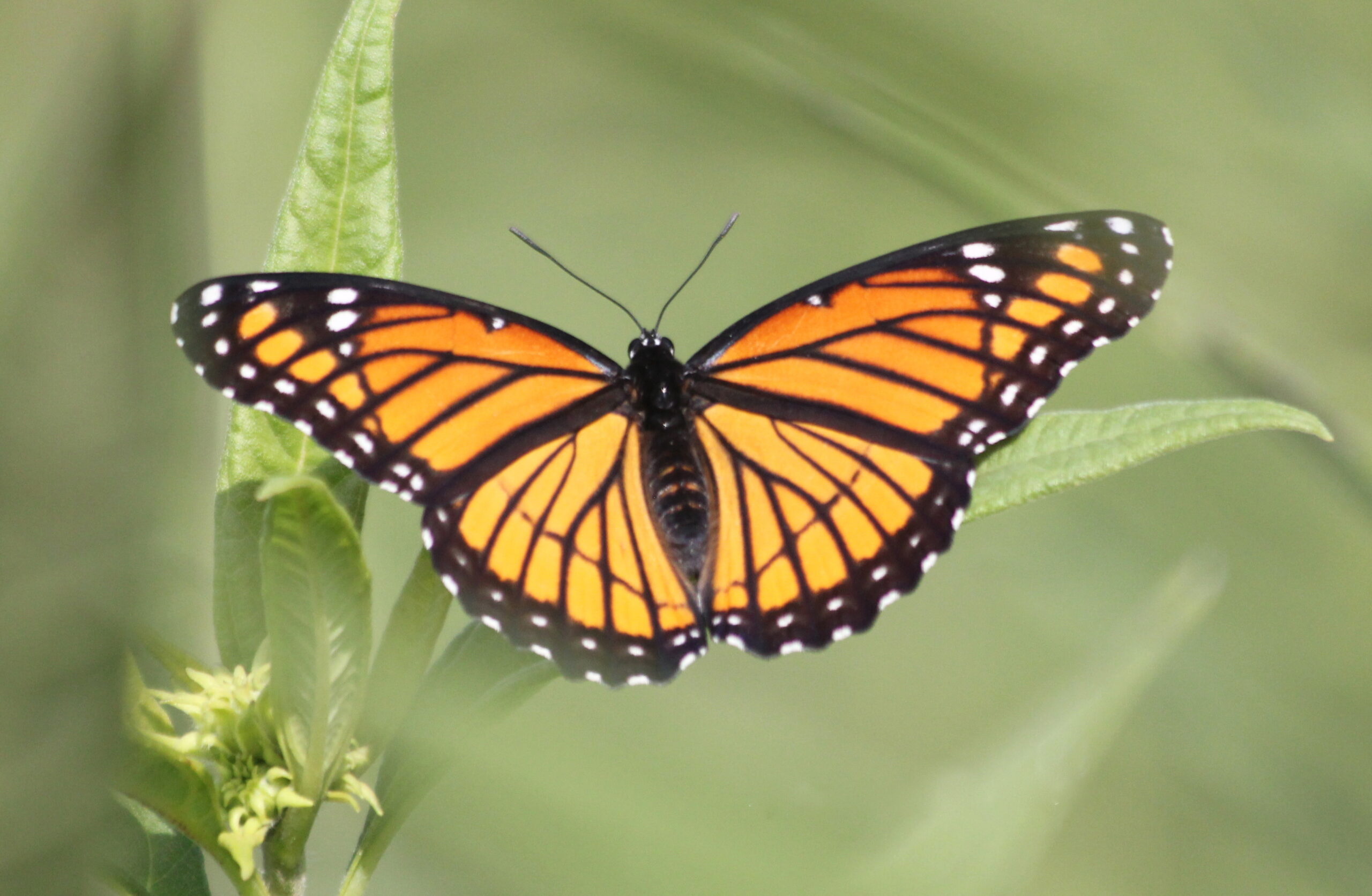
The viceroy butterfly is a species that very closely resembles the monarch—and by design! It was once thought that viceroys evolved to mimic the warning coloration of monarchs as a way to fend off predators without being toxic themselves. However, recent research has shown that viceroys are unpalatable as well, so it is more likely that the viceroy and monarch have evolved as co-mimics.
Viceroy and monarch adults are almost identical in color, except that viceroys sport a thick line across the hindwing where monarchs do not. Viceroys also tend to be smaller than monarchs. From a distance, the viceroy butterfly’s flight is more rapid and erratic than a monarch’s. In contrast, the monarch butterfly has a comparatively distinctive gilding flight, often described as “sailing” through the air.

Unlike the monarch caterpillar, the viceroy caterpillar employs a different survival strategy: camouflage, rather than warning. It mimics bird droppings to avoid predation, making it quite different in appearance from monarch caterpillars. They also lack the antennae-like tentacles seen in monarch and queen caterpillars.
Viceroy caterpillars do not use milkweed as a host plant. Instead, they prefer willow, poplar, and apple trees.
Queen Butterfly
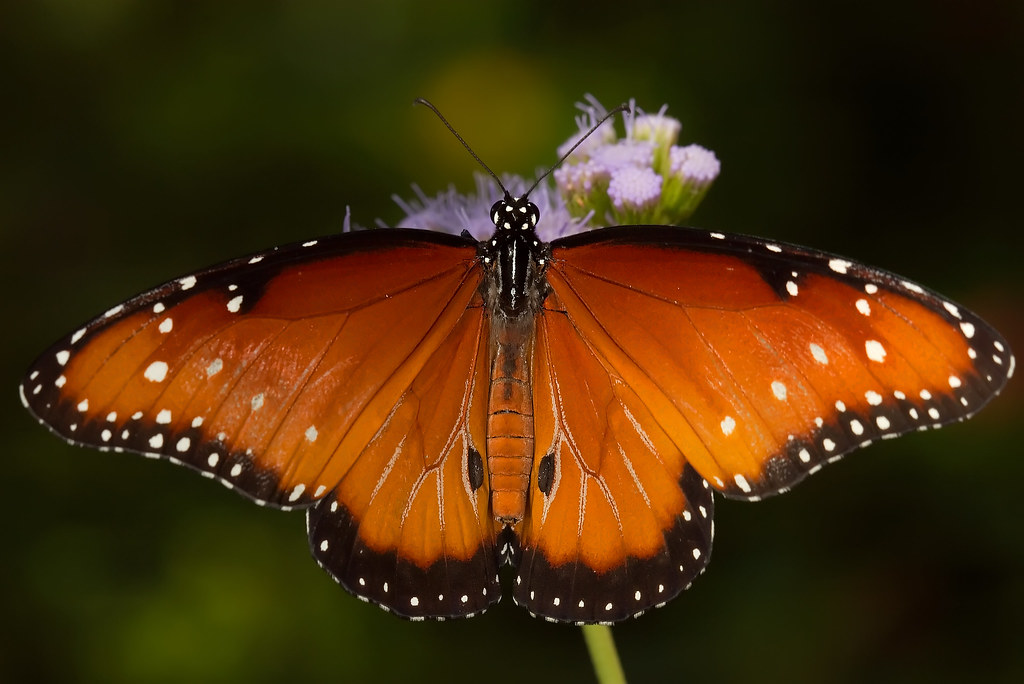
The queen butterfly is often mistaken for the monarch due to its similar orange and black coloration. It’s primarily found in the southern United States, Mexico, and Central America.
Queen butterflies are slightly smaller, with a wingspan of 2.5 to 3.5 inches. Their coloration is similar, though the queen’s orange is of a deeper, browner shade. Queen butterflies also lack the monarch’s black coloration over their wing veins. However, they do have some dark black veining on the underside of the hind wings only, which are exposed when the wings are closed. In this case, look for a lack of black veining on the underside of the forewing, as well as white spots within the orange portion of the wing. Monarch butterflies do not have white spots except for on black background.
Queen butterflies also have black bodies with white spots, but unlike monarchs, their abdomen is tipped in gray-orange. Like the viceroy, the queen’s flight pattern is quicker and flutterier than the monarch’s characteristic glide.
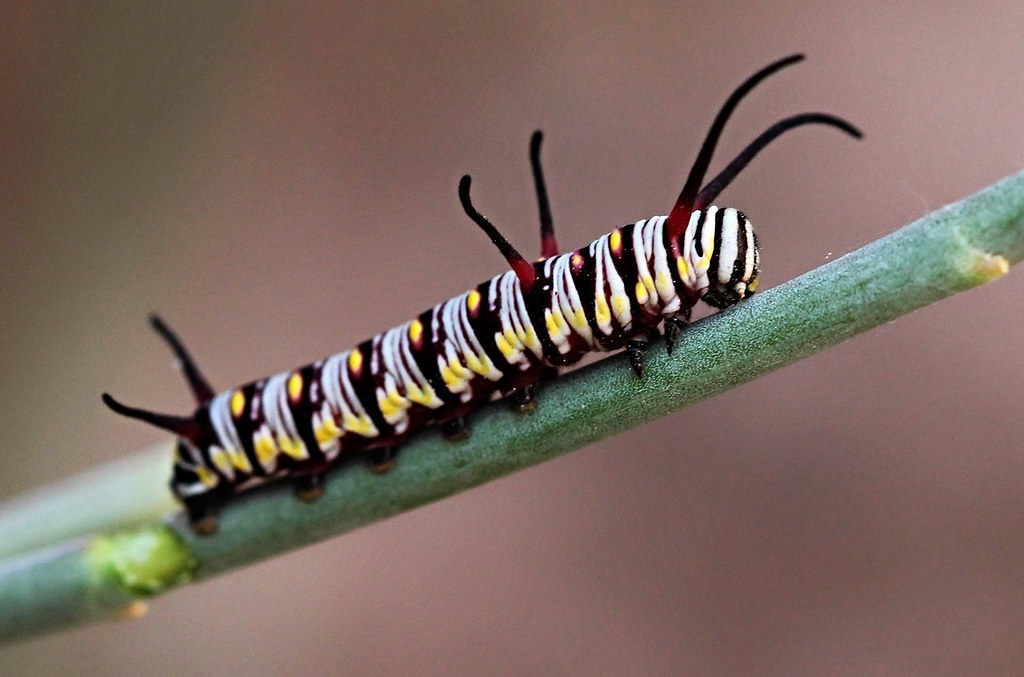
The queen caterpillar shares many similarities with the monarch caterpillar, making it easy to confuse the two. Like the monarch, the queen caterpillar feeds on milkweed. It has similar bands of yellow, black, and white, but often with a more muted or subdued tone. Queen caterpillars are also generally smaller. The best way to tell these caterpillars apart is to count how many pairs of tentacles they have—monarchs have one pair on each end, while queen caterpillars have a third set partway down the body.
Painted Lady Butterfly
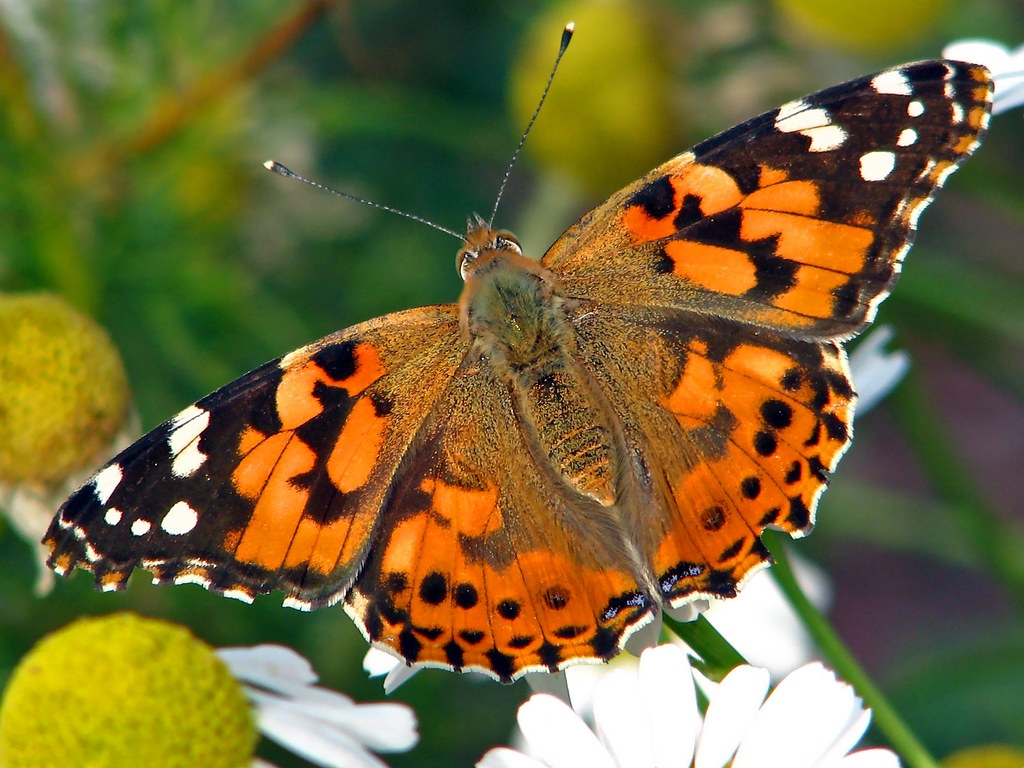
The painted lady is another species that could be mistaken for the monarch, especially by those new to butterfly watching. While it’s not as similar as the queen or viceroy, its orange coloration can sometimes cause confusion.
Painted ladies are generally smaller than monarchs, with a wingspan of 2 to 2.9 inches. Their orange wings feature more complex patterns that lack veining. The black and white spotted borders of the wing melts into the orange, rather than having distinct line edges as seen in monarchs.
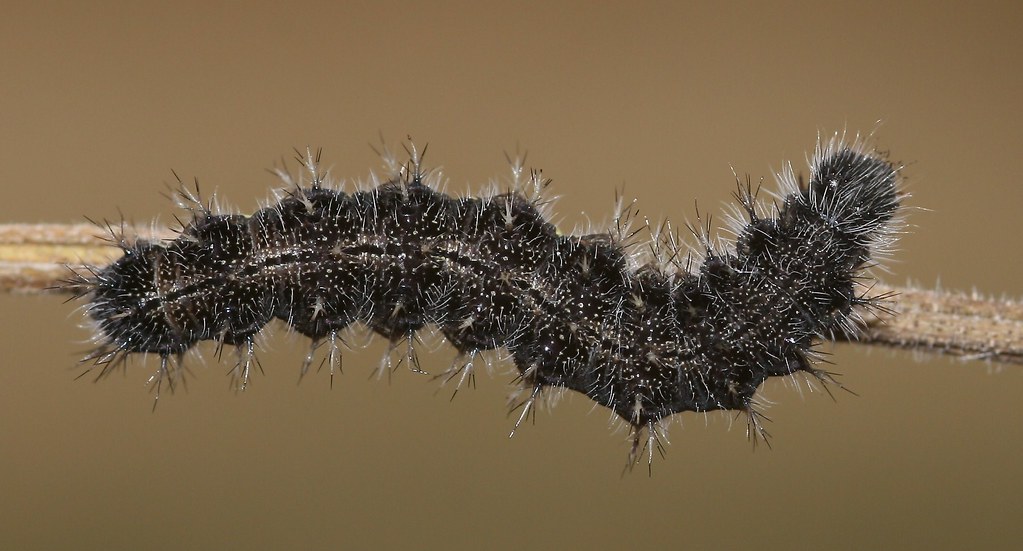
The painted lady caterpillar is very distinct from monarch caterpillars, covered in spiky thorns. Unlike monarchs, painted Lady caterpillars have a broad diet that includes thistles, hollyhocks, and legumes. They will not be found on milkweed.
Black Swallowtail Caterpillar
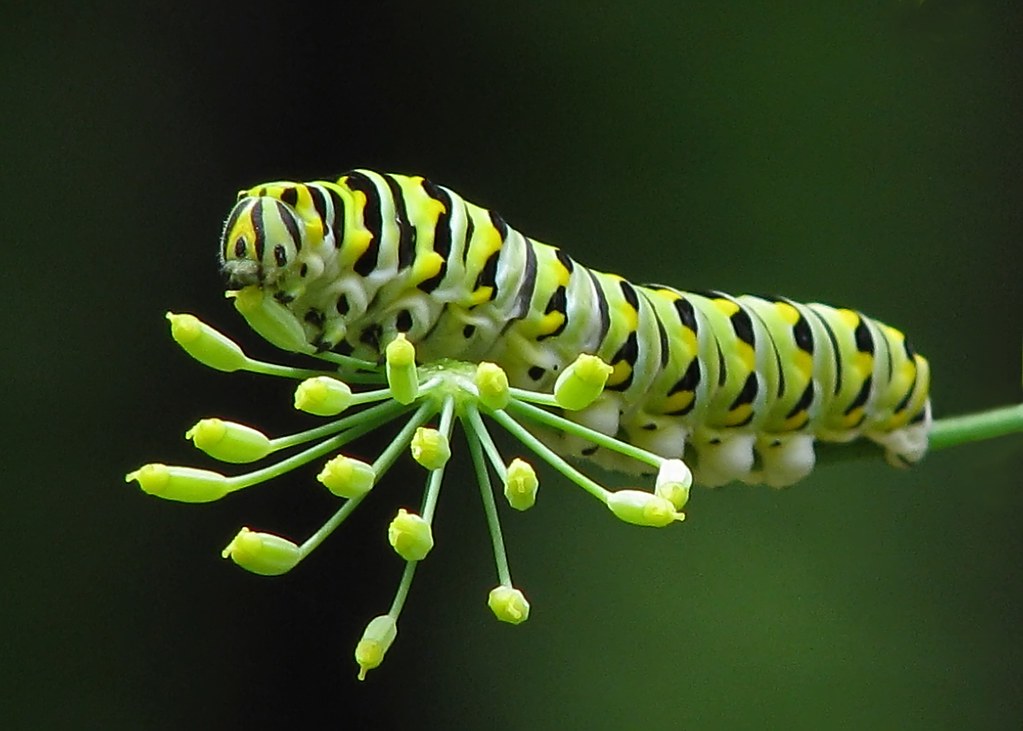
While the adult black swallowtail butterfly looks quite different from a monarch, its caterpillar stage can sometimes cause confusion. This caterpillar features black bands with yellow markings, which can look similar to monarch caterpillars at a quick glance. However, unlike monarch caterpillars, these caterpillars sport quite a bit of green.
In general, the black swallowtail caterpillar has more prominent black bands than the monarch caterpillar. It also has a distinct, horn-like organ behind the head called an “osmeterium,” which can be extended when threatened to emit a foul odor. Monarch caterpillars do not have this feature.
Finally, the black swallowtail caterpillar prefers plants in the parsley family, including dill and fennel, rather than milkweed.
Test Your Skills
Now that you’re armed with the knowledge to distinguish monarch butterflies and caterpillars from their similar-looking counterparts, it’s time to put your skills to the test! Are you ready to prove you’re a true Monarch Maven? Take our interactive quiz to see how well you can identify these beautiful creatures and their look-alikes. Challenge yourself, share your score, and most importantly, enjoy the journey of discovery in the great outdoors. Happy butterfly watching!




















